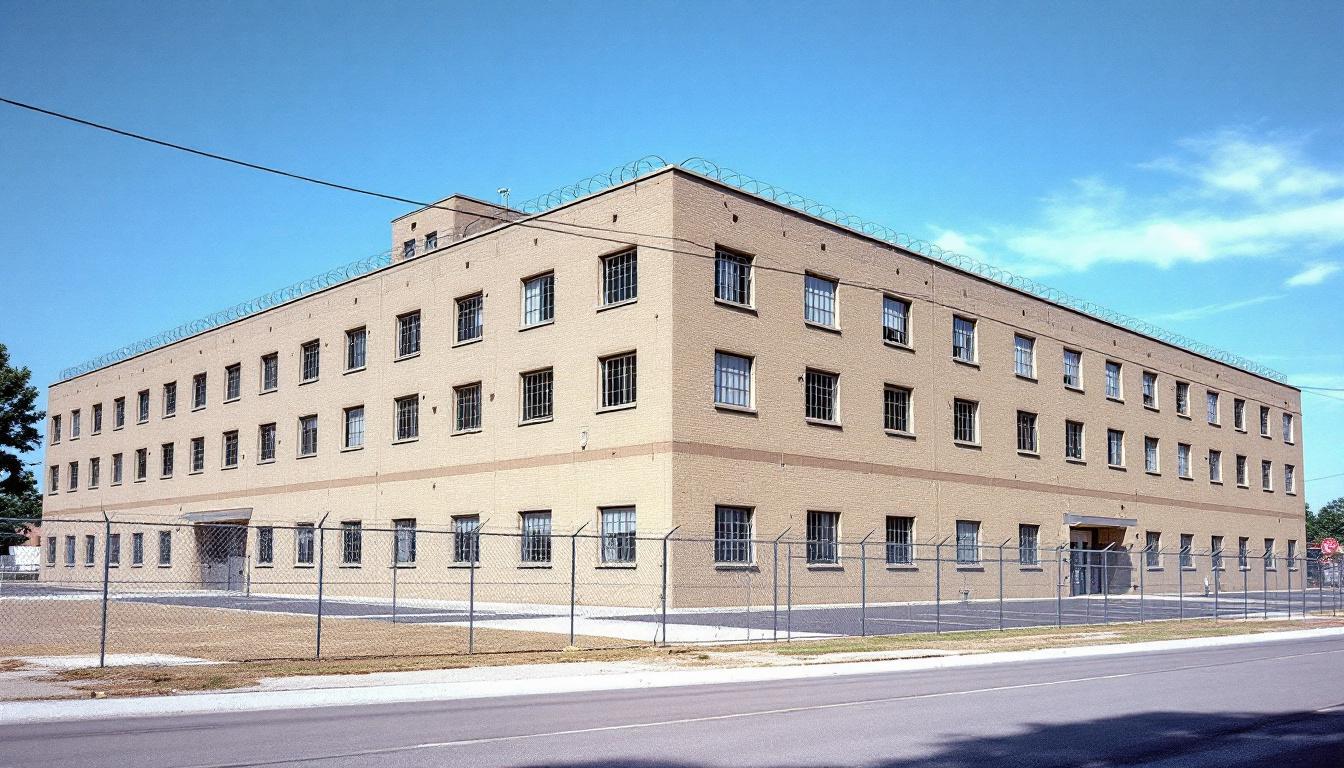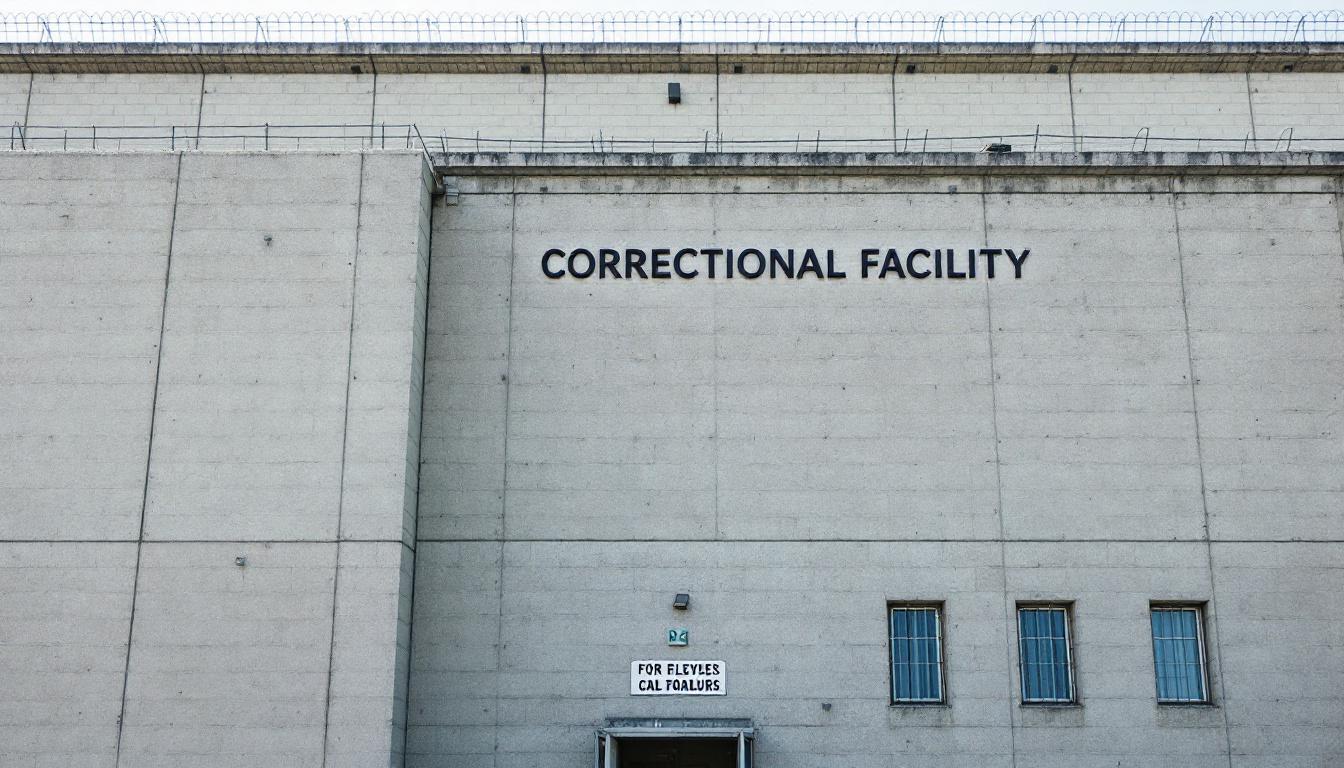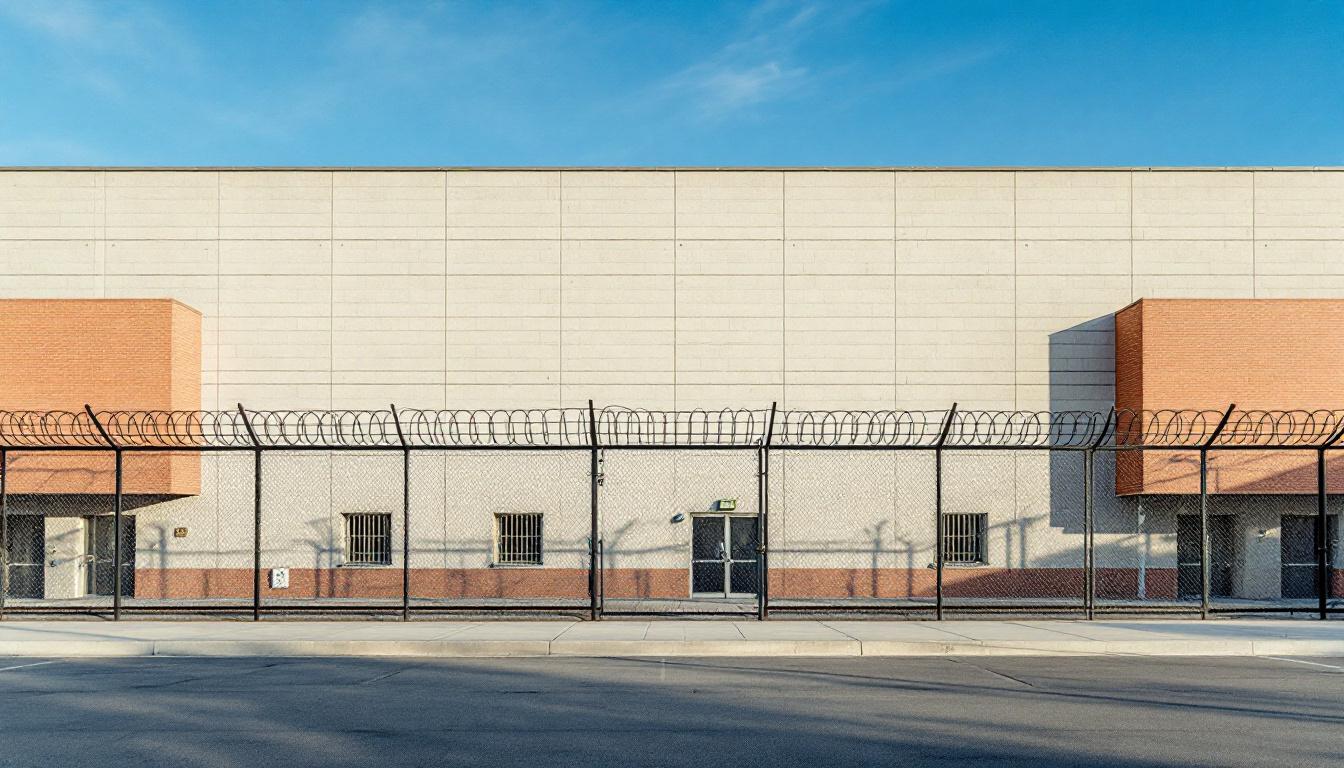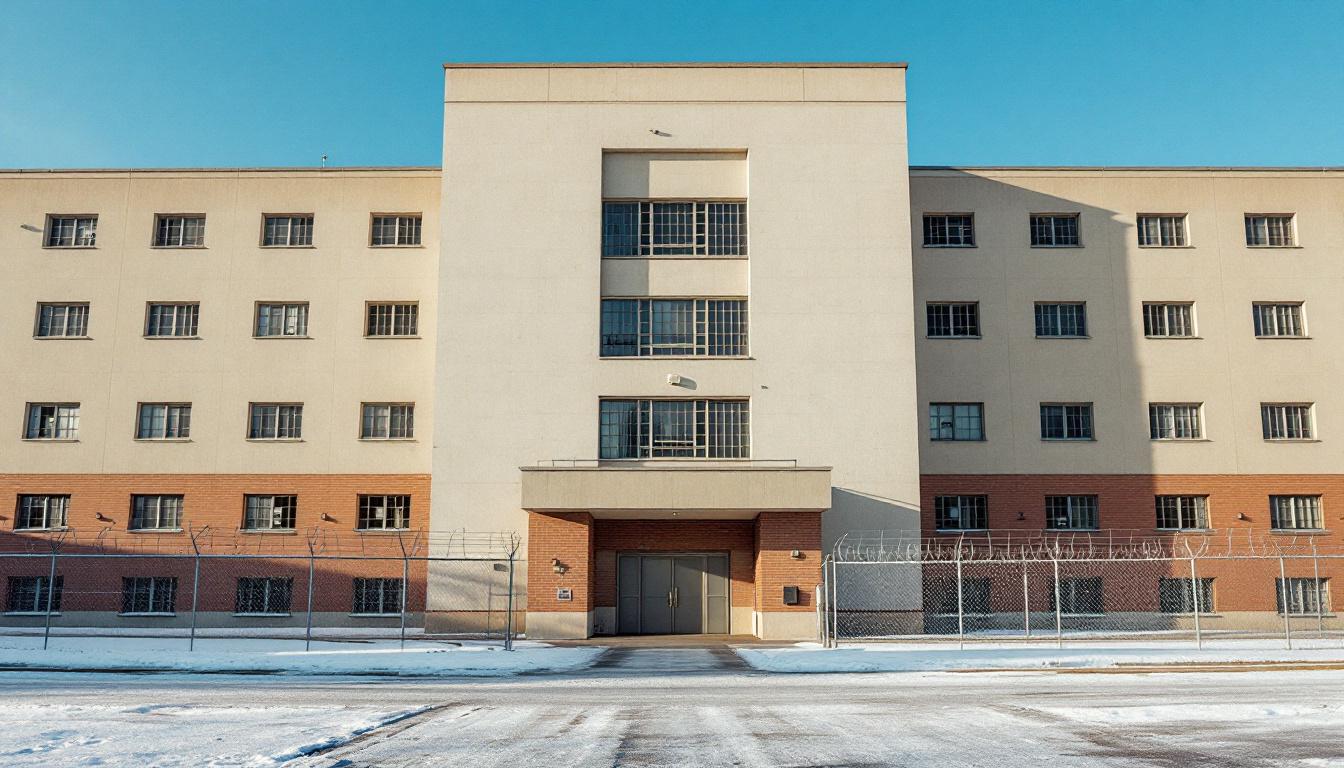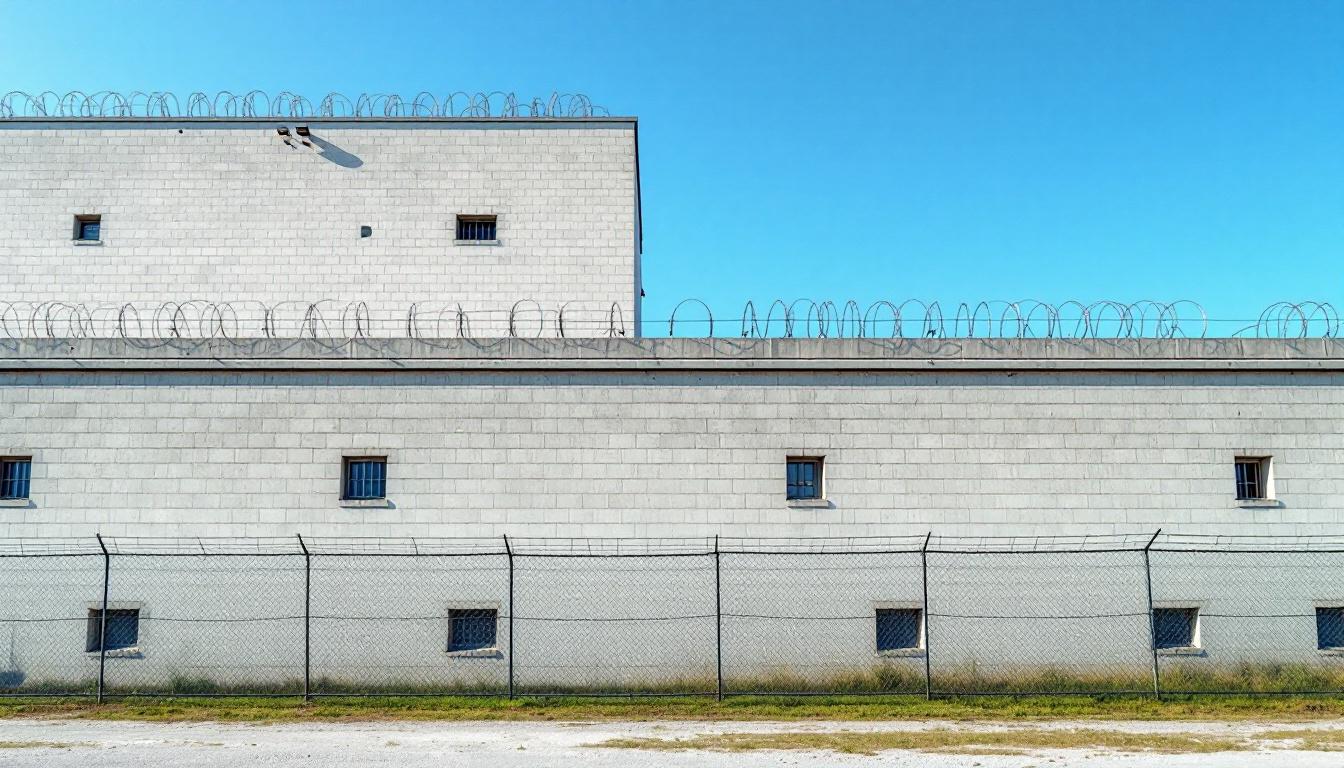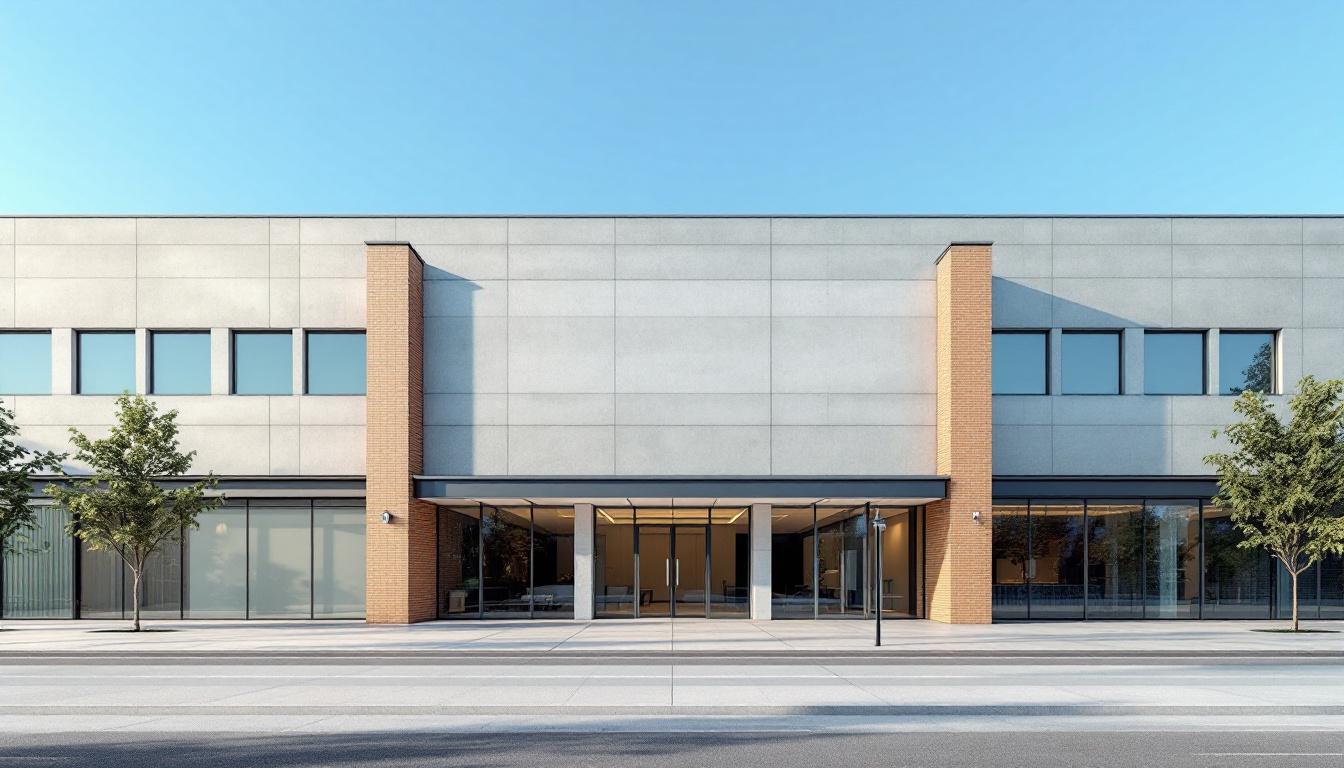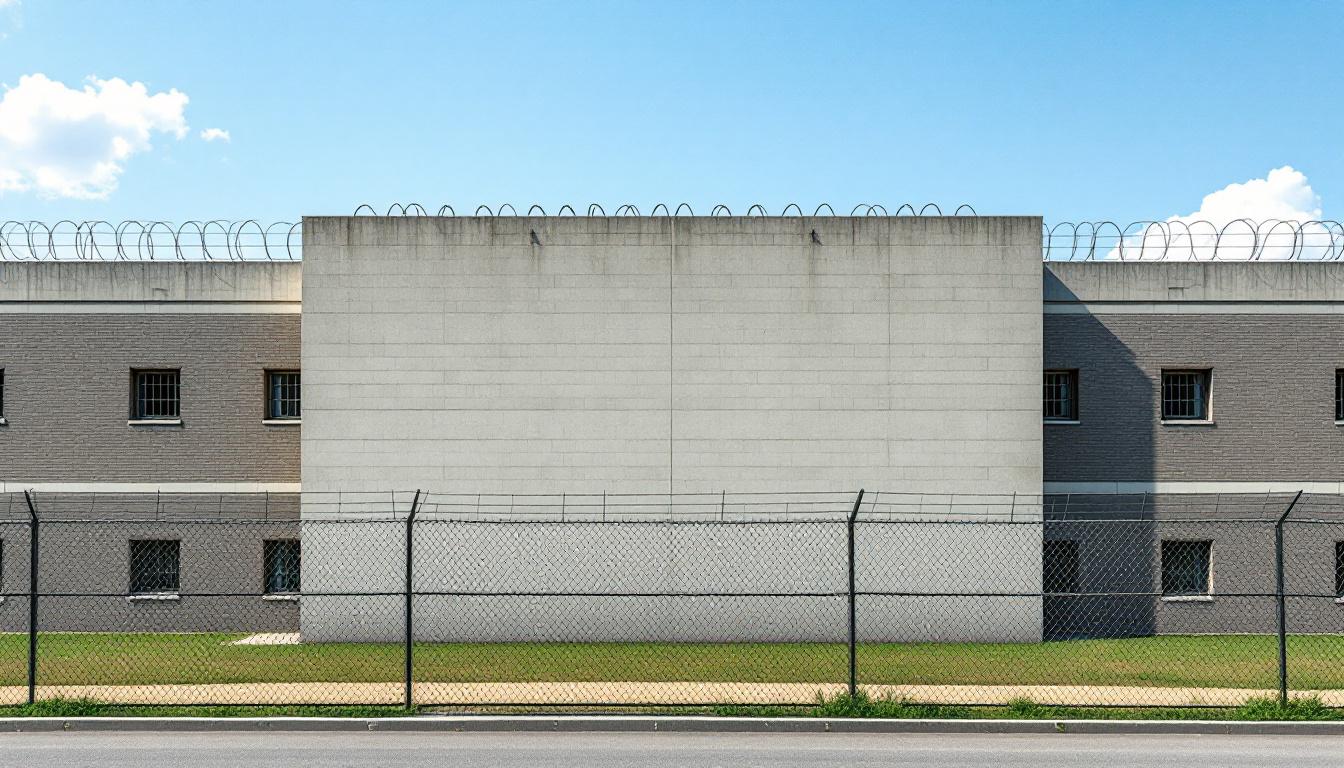
Quick Navigation
How to contact an inmate at Greenwood County Sheriff's Office
This comprehensive guide will walk you through how to connect with an inmate at Greenwood County Sheriff's Office. Follow the steps below to find an inmate and send letters and photos:
- Search for the inmate using our search tool below
- Create your account or log in to Penmate
- Write your message (up to 6,000 characters)
- Send instantly - inmates receive printed copies daily
Find an Inmate
Search for an inmate to start communicating today
Tip: You can search by first name, last name, or inmate ID number
To contact a person at Greenwood County Sheriff's Office start by searching for the person on the official facility website. Perform a search by following these steps:
- Step 1: Enter their first name and last name into the search form and click "Search"
- Step 2: Locate their inmate record
- Step 3: Write down their Inmate ID and any housing information provided
Important! Be sure to enter the person's full name. Nicknames should not be used.
How to Send Messages to Inmates

You can use your phone or computer to send emails, letters, and photos to an inmate. Messages are sent electronically to inmate tablets or kiosks at the facility. If you would like to send a message, start by searching for an inmate at Greenwood County Sheriff's Office.
Sending Photos and Postcards

A great way to send love and support to a loved one at Greenwood County Sheriff's Office is to send photos and postcards. It only takes a few minutes to send photos from your phone and it makes a huge difference. You can also mail postcards with words of support and inspiration, or design your own postcard for special moments like birthdays and holidays.
Important! Be sure not to send any explicit photos or they may not be approved by the facility. You can also use a photo printing app like Penmate to make sure your photos are printed at the correct size (4x6 or 3x5) and are mailed according to the rules and regulations of Greenwood County Sheriff's Office.
Frequently asked questions about Greenwood County Sheriff's Office
-
How long does it take to deliver a message?
If you're sending an email message your letter is usually delivered within 24-48 hours. For messages sent via mail you should expect delivery within 3-7 days. All messages will need be approved by Greenwood County Sheriff's Office.
-
How much does it cost to send a message to Greenwood County Sheriff's Office?
You can send a message free using your phone or mail a message via USPS for the price of a $0.60 stamp and envelope. You can also purchase credits or e-stamps from services starting at $1.99.
-
What services can I use to contact an inmate at Greenwood County Sheriff's Office?
Penmate
You can use Penmate to send letters and photos to an inmate from your phone. It's an easy way to stay in touch during your loved one's incarceration. Use the inmate locator to find an inmate's location and contact information, then you can send messages within a few minutes.
Securus messaging
Securus may be another option for communicating with an inmate at Greenwood County Sheriff's Office. You can create a friends and family account and purchase credits to send messages. All messages will be reviewed and must be approved by the facility.
JPay
Some county jails and state prisons may support sending messages with JPay. You must register an account with the system, find your loved one, and purchase stamps to send messages. For some locations you can also attach photos.
Smart Jail Mail
You may also check if Smart Jail Mail is available at Greenwood County Sheriff's Office. Smart Jail Mail is operated by Smart Communications and has contracted with some state and county jails. After purchasing credits, your messages and photos are sent to the facility, printed out, and then handed out to your loved one.
-
What is the mailing address of Greenwood County Sheriff's Office?
Mailing address:
Greenwood County Sheriff's Office
311 N Main St
Eureka, KS 67045
Phone: (620) 583-5568 -
What are the visiting hours at Greenwood County Sheriff's Office?
Visiting hours at Greenwood County Sheriff's Office vary by housing unit and security level. Generally, visits are scheduled on weekends and holidays, with some facilities offering weekday visits. Contact the facility directly at (620) 583-5568 or check their website for the current visiting schedule. Visits typically last 30-60 minutes and must be scheduled in advance.
-
What items are prohibited when sending mail to Greenwood County Sheriff's Office?
Prohibited items typically include: cash, personal checks, stamps, stickers, glitter, glue, tape, staples, paperclips, polaroid photos, musical or blank greeting cards, hardcover books, magazines with staples, and any items containing metal or electronics. Only send letters on plain white paper with blue or black ink. Photos must be printed on regular photo paper (no Polaroids). Always check with Greenwood County Sheriff's Office for their specific mail policies.
-
How do I send money to an inmate at Greenwood County Sheriff's Office?
You can send money to an inmate at Greenwood County Sheriff's Office through several methods: 1) Online using JPay, Access Corrections, or the facility's approved vendor, 2) Money orders mailed directly to the facility with the inmate's name and ID number, 3) Kiosks located in the facility lobby, or 4) Over the phone using a credit or debit card. Fees vary by method, typically ranging from $2.95 to $11.95 per transaction.
-
Can I schedule a video visit with an inmate at Greenwood County Sheriff's Office?
Many facilities now offer video visitation as an alternative to in-person visits. At Greenwood County Sheriff's Office, video visits may be available through services like Penmate, Securus Video Connect, GTL, or ICSolutions. Video visits typically cost $10-20 for 20-30 minutes and must be scheduled in advance. You'll need a computer or smartphone with a camera and reliable internet connection. Contact the facility for their specific video visitation policies and approved vendors.
-
What identification do I need to visit an inmate at Greenwood County Sheriff's Office?
All visitors must present valid government-issued photo identification such as a driver's license, state ID, passport, or military ID. Minors must be accompanied by a parent or legal guardian who can provide the minor's birth certificate. Some facilities require visitors to be on the inmate's approved visitation list, which may require a background check. Contact Greenwood County Sheriff's Office for specific ID requirements and visitor approval procedures.
-
How can I find out an inmate's release date?
To find an inmate's release date at Greenwood County Sheriff's Office, you can: 1) Use the online inmate search tool if available, 2) Call the facility's records department, 3) Contact the inmate's case manager or counselor, or 4) Have the inmate provide this information during a call or visit. For privacy reasons, some facilities only release this information to immediate family members.
Facility Overview
Contact Information
Greenwood County Sheriff's Office311 N Main St
Eureka, KS 67045
Phone: (620) 583-5568
Official Website

About Greenwood County Sheriff's Office
County jail facilities throughout the Midwest region serve as crucial components of local law enforcement and judicial systems, with the Greenwood County Ks Jail, KS exemplifying this essential public safety infrastructure in Eureka, Kansas. This KS correctional facility operates within the framework of maintaining secure custody while recognizing the importance of preparing individuals for successful community reintegration.
Positioned in Eureka, the facility typically maintains operational standards consistent with county-level correctional institutions throughout Kansas, balancing immediate security requirements with longer-term rehabilitation considerations. The population services generally encompass basic medical care, educational opportunities, and substance abuse programming that may be available to help address underlying issues contributing to criminal behavior. Staff members often work to create an environment where inmates can access resources that support personal development while ensuring public safety remains the primary focus.
The county jail's role within Kansas's broader correctional landscape typically involves housing pre-trial detainees, individuals serving shorter sentences, and those awaiting transfer to state facilities. Programs may include work release opportunities, educational classes, and counseling services designed to support successful reentry into the community. The facility generally coordinates with local organizations and service providers to offer comprehensive support that addresses the diverse needs of the incarcerated population while maintaining the security protocols essential to effective correctional operations.
Programs & Services
Comprehensive support services form the foundation of programming at Greenwood County Jail, with each initiative designed to address the diverse needs of the population during their period of incarceration. The facility's approach emphasizes building essential life skills and addressing underlying issues that may have contributed to involvement with the justice system. These programs typically focus on preparing individuals for successful reintegration into their communities while providing immediate support during their stay.
Educational programs serve as a cornerstone of the facility's offerings, often including basic literacy instruction, GED preparation, and computer skills training. The population may access structured learning opportunities that help them develop fundamental academic competencies essential for future employment and personal growth. Additionally, vocational training programs provide hands-on experience in practical trades, with opportunities that may include construction skills, maintenance techniques, and other marketable abilities. These educational and vocational initiatives work together to enhance the population's prospects for stable employment upon release.
Support services extend beyond academic learning to address personal challenges through therapeutic programs designed to promote lasting behavioral change. Substance abuse treatment programs typically offer both group and individual counseling sessions, helping participants develop coping strategies and understand the factors contributing to addiction. The facility may also provide specialized sex offender treatment programs that focus on accountability and rehabilitation. Additionally, unique offerings such as masonry programs give the population practical construction skills while fostering a sense of accomplishment and purpose, demonstrating the facility's commitment to comprehensive support that addresses both immediate needs and long-term success.
Daily Life & Visitation

Organizational systems and structured protocols now shape every aspect of life within the facility, creating predictable routines that help the population navigate their daily experience. Staff regularly implement scheduling frameworks that balance security requirements with programming opportunities. The population typically follows established meal times, count procedures, and movement protocols that supply consistency throughout each day. Generally, wake-up occurs in the early morning hours, followed by scheduled meals, work assignments, and structured activities that extend into the evening.
Housing arrangements at the facility typically feature dormitory-style accommodations or smaller housing units, depending on classification levels and available space. The population generally shares common areas for dining and recreation, while personal living spaces may include basic furnishings and storage for approved personal property. Additionally, commissary services usually operate on scheduled days, allowing residents to purchase approved items that supplement their daily needs. While security procedures govern movement between areas, the population can typically access various sections of the facility during designated hours for meals, programming, and recreational activities.
Work assignments often supply structure and purpose, with the population participating in facility maintenance, kitchen duties, and cleaning responsibilities that help maintain daily operations. Programming schedules typically include educational opportunities, counseling sessions, and recreational periods that may feature television viewing, reading, or physical exercise in designated areas. Family connections remain important through regularly scheduled visitation periods and telephone access, which generally operates according to established time frames and security protocols. While communication options may include video visitation or traditional in-person visits, these services typically follow specific scheduling systems that accommodate both facility operations and family needs.
Ready to Connect?
Start communicating with your loved one today
Search for an Inmate
